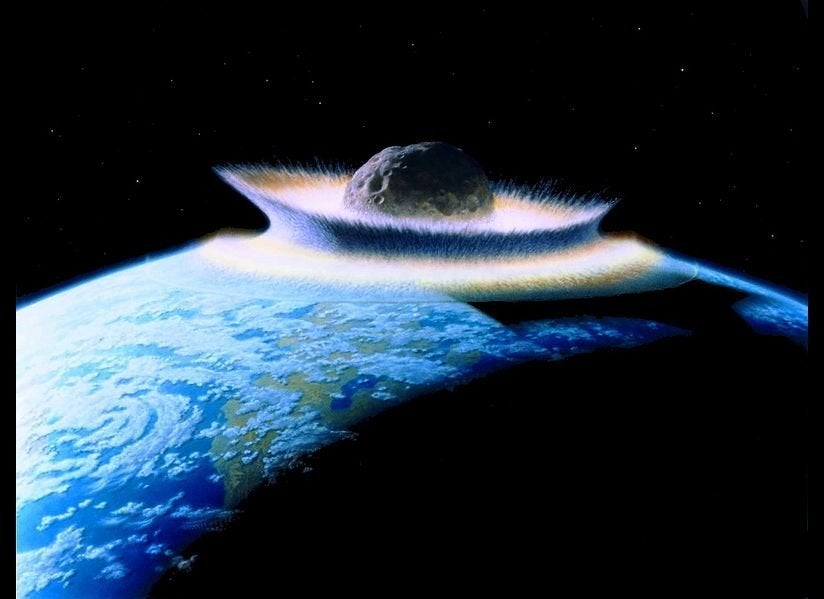
By: Mike Wall
Published: 04/10/2013 08:03 AM EDT on SPACE.com
NASA's bold plan to drag an asteroid into orbit around the moon may sound like science fiction, but it's achievable with current technology, experts say.
President Barack Obama's 2014 federal budget request, which will be unveiled today (April 10), likely includes about $100 million for NASA to jump-start an asteroid-capture mission, U.S. Senator Bill Nelson (D-FL) said last week.
The plan aims to place a roughly 23-foot-wide (7 meters) space rock into a stable lunar orbit, where astronauts could begin visiting it as soon as 2021 using NASA's Space Launch System rocket and Orion capsule, Nelson said.
While challenging, the mission is definitely doable, said Chris Lewicki, president and chief engineer of billionaire-backed asteroid-mining firm Planetary Resources. [NASA's Asteroid-Capture Plan (Video)]
"Return of a near-Earth asteroid of this size would require today’s largest launch vehicles and today’s most efficient propulsion systems in order to achieve the mission," Lewicki, who served as flight director for NASA's Spirit and Opportunity Mars rovers and surface mission manager for the agency's Phoenix Mars lander, wrote in a blog post Sunday (April 7).
"Even so, capturing and transporting a small asteroid should be a fairly straightforward affair," Lewicki added. "Mission cost and complexity are likely on par with missions like the [$2.5 billion] Curiosity Mars rover."
Spurring solar system exploration
NASA's idea is similar to one proposed last year by scientists based at Caltech's Keck Institute for Space Studies in Pasadena.
The Keck study estimated that a robotic spacecraft could drag a 23-foot near-Earth asteroid (NEA) — which would likely weigh about 500 tons — into a high lunar orbit for $2.6 billion. The returns on this initial investment are potentially huge, the researchers said.
"Experience gained via human expeditions to the small returned NEA would transfer directly to follow-on international expeditions beyond the Earth-moon system: to other near-Earth asteroids, [the Mars moons] Phobos and Deimos, Mars and potentially someday to the main asteroid belt," the Keck team wrote in a feasibility study of their plan.
The mission would also help develop asteroid-mining technology, advocates say, and advance scientists' understanding of how our solar system took shape more than 4.5 billion years ago.
Asteroids "probably represent samples of the earliest matter that was made available to form our solar system and our Earth," Caltech's Paul Dimotakis, a member of the Keck study team, told SPACE.com in February.
"We learned a lot about the moon by analyzing the moon rocks that Apollo astronauts brought back," he added. [NASA's 17 Apollo Moon Missions in Pictures]
A challenging mission
Unmanned probes have successfully rendezvoused with asteroids in deep space multiple times. Japan's Hayabusa craft even snagged pieces of the near-Earth asteroid Itokawa in 2005, sending them back to our planet for study.
But bagging an entire asteroid and dragging it to our neck of the cosmic woods is unprecedented, and it presents several daunting challenges.
For example, the target asteroid will be spinning, which doesn't make for a smooth ride to lunar orbit. After the spacecraft captures the asteroid and brings it into a hold of sorts, the space rock will have to be de-spun, likely with thrusters, Dimotakis said.
"You might use reaction jets to take out most of it [the spin]," he said. "You would give you yourself a lot of time to do this, because there's no second chance in any of this."
Further, bringing the asteroid onboard greatly increases the spacecraft's mass, making propulsion and navigation much more difficult. And precise navigation will definitely be required to deliver the space rock to its desired orbit, Dimotakis said (though he also stressed that any asteroid chosen would pose no danger to humanity even if it somehow struck our planet).
But ion thrusters like the ones powering NASA's Dawn mission to the huge asteroid Vesta and dwarf planet Ceres should be muscular enough to make the journey, likely taking a few years to reach the asteroid and somewhat longer to come back. And the asteroid-laden probe could probably still be guided with great care, he added.
"My guess is that all of these are not insurmountable challenges, and you would be able to calibrate yourself after you snagged it and adjust your controls," Dimotakis said.
Choosing a target
Perhaps the biggest challenge of the entire mission is picking a suitable space rock to retrieve, Lewicki wrote in his blog post.
The Keck study recommends going after a carbonaceous asteroid packed full of water and other volatiles. Carbonaceous asteroids can be very dark, and it's tough to spot and characterize a 23-foot asteroid in the vast depths of space whatever its color.
So both Lewicki and Dimotakis stressed the importance of searching for potential asteroid targets sooner rather than later. Planetary Resources plans to begin launching a line of small prospecting space telescopes in 2014 or 2015, and these "Arkyd-100" craft could aid NASA's mission, Lewicki wrote.
Dimotakis, for his part, is engaged in a follow-up to the Keck study that's looking for potential targets in observations made by current telescopes.
"We are developing software in collaboration with JPL [NASA's Jet Propulsion Laboratory] that is going to exploit the observational digital record and essentially flag things that could be of interest and might be in this class," he said. "This has never happened before."
Still, NASA should make sure that mission scientists and engineers don't just sit on their hands until an asteroid selection is made, he added.
It's important "to start developing the spacecraft before you even know where you're going," Dimotakis said. "If you do these things in parallel, then the mission timeline shrinks."
Follow Mike Wall on Twitter @michaeldwall. Follow us @Spacedotcom, Facebook or Google+. Originally published on SPACE.com.
